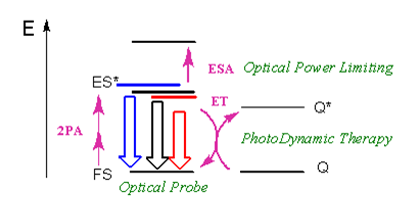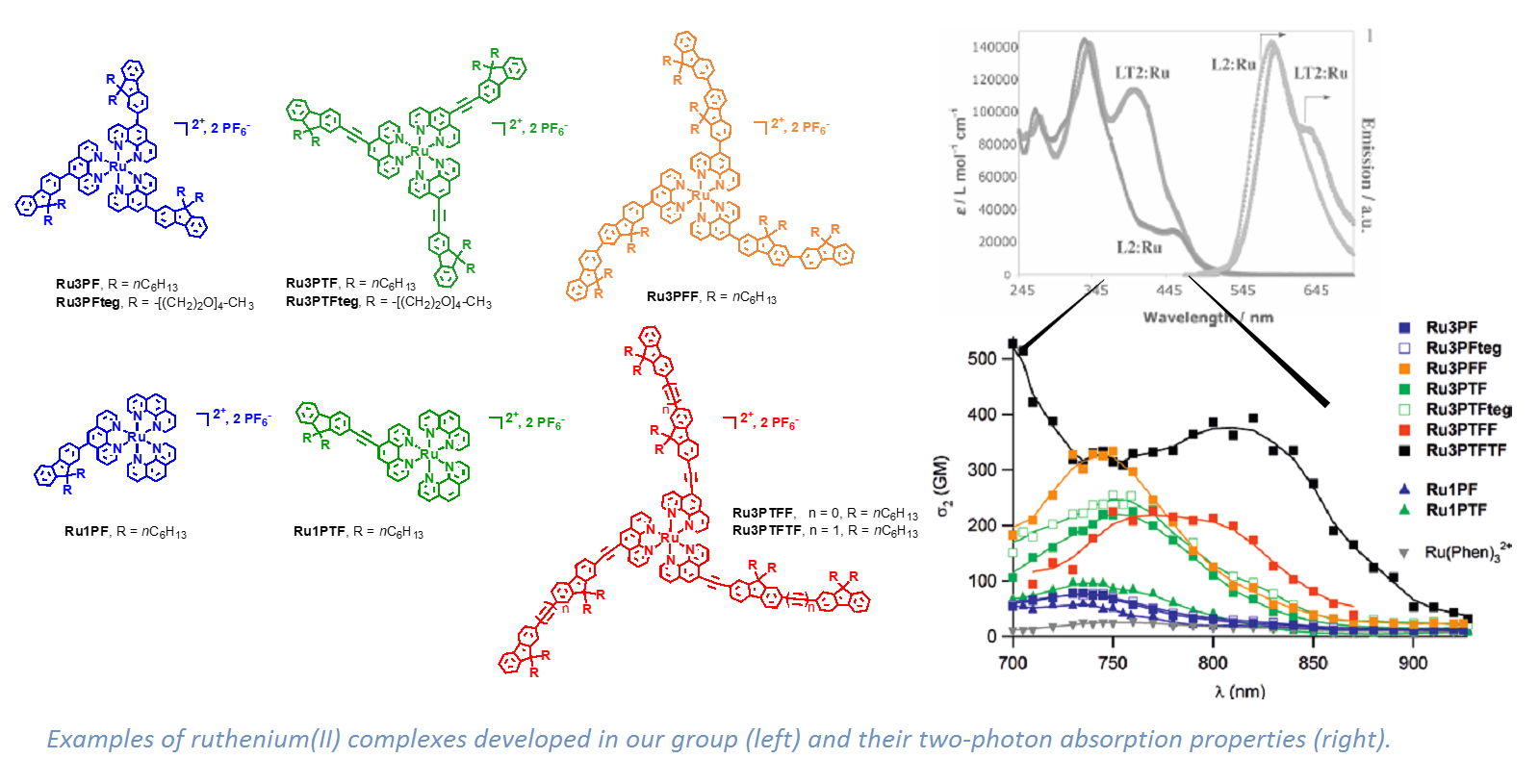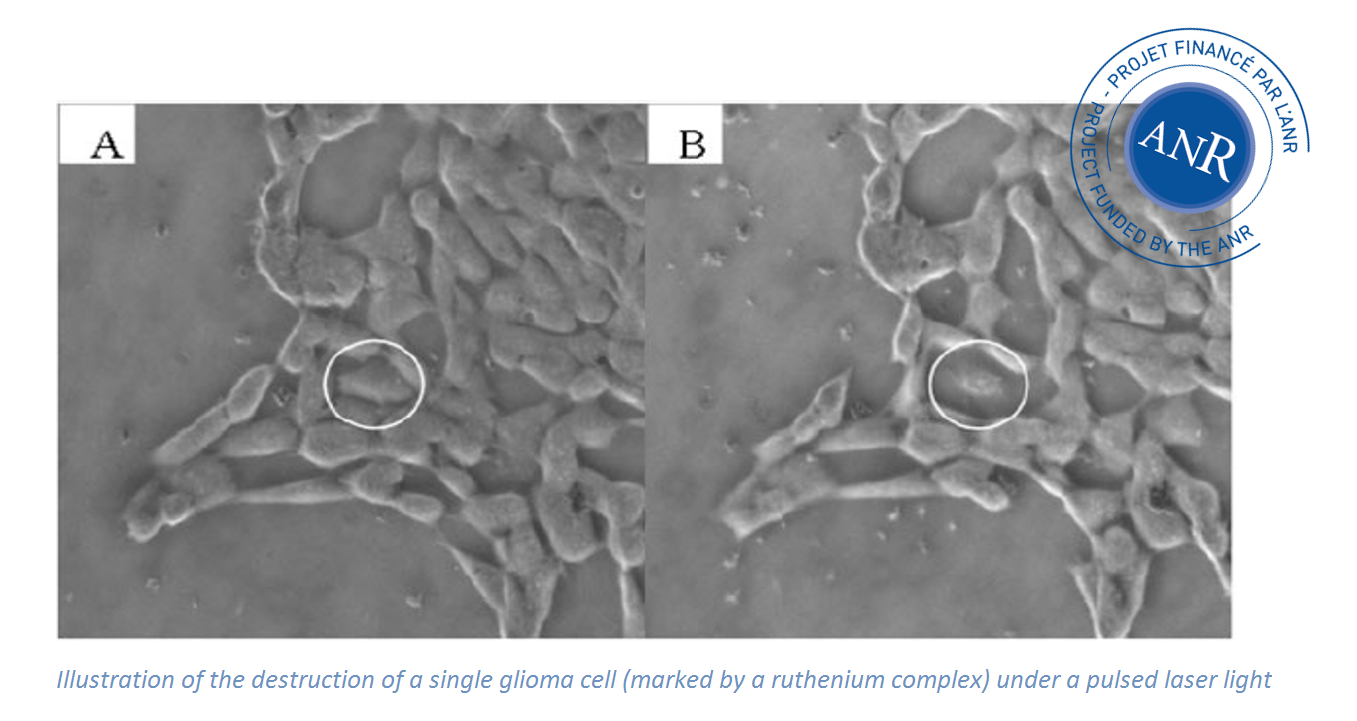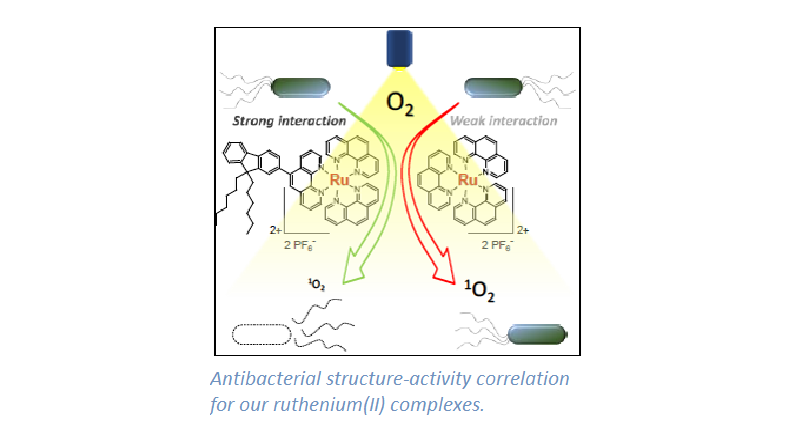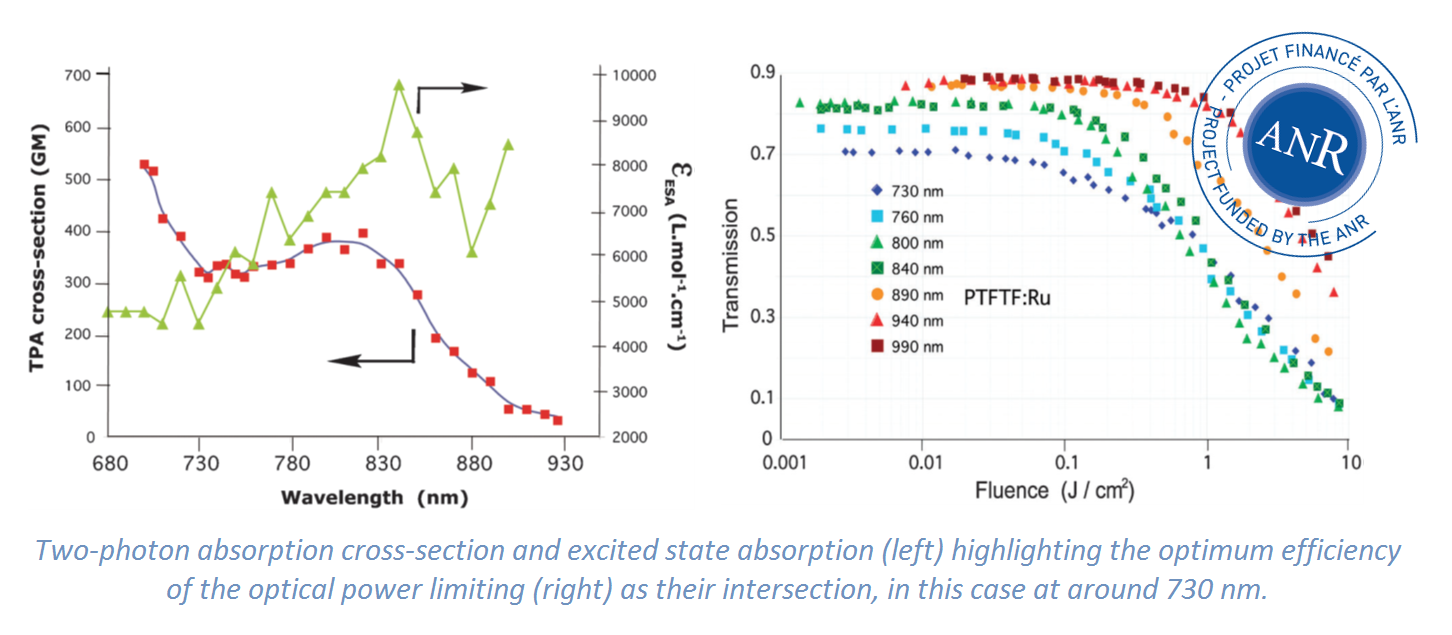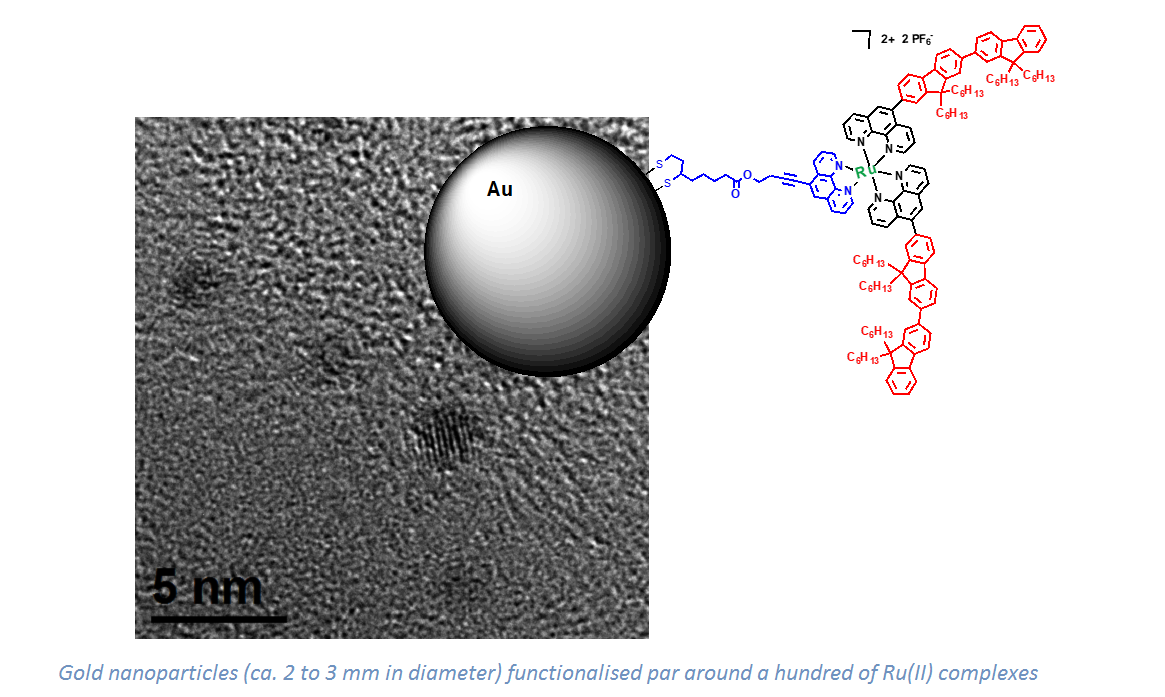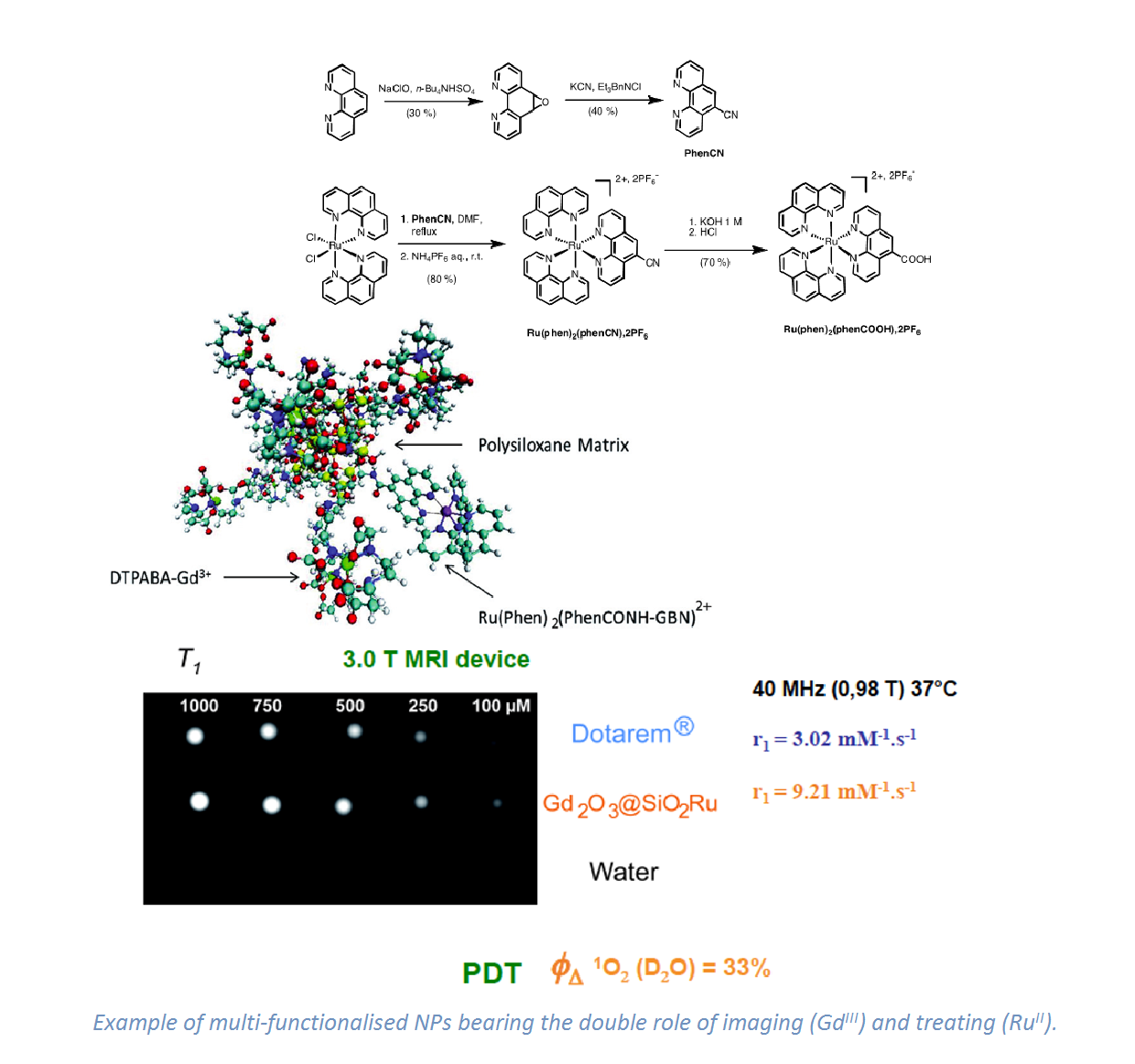Research interest:
Our group focuses on the synthesis and study of new ligands and their associated homo- and heteroleptic coordination complexes which possess magnetic and optical (linear and non-linear) properties.
Our work relies essentially on the optimisation of our compounds’ excited states, reached through traditional one-photon absorption or through two-photon absorption. We place emphasis both on fundamental research and on design to specifically target certain applications, such as:
- Theranostic: combination of the words therapy and diagnostic, this medical field concerns the coupled imaging and precisely targeted treatment of cancerous cells. The treatment is carried out by photodynamic therapy, a technique based on the quenching of the triplet excited state of a photosensitiser by a dioxygen molecule, leading to singlet oxygen acting as a cytotoxic agent.
- Optical power limiting: a non-linear optical property of materials which results in the limitation of the transmission of light when the intensity of the incident light is high (which could be used to protect eyes from strong laser lights, for instance). This phenomenon requires the material to possess appropriate two-photon absorption (2-PA) and excited state absorption (ESA) properties.

